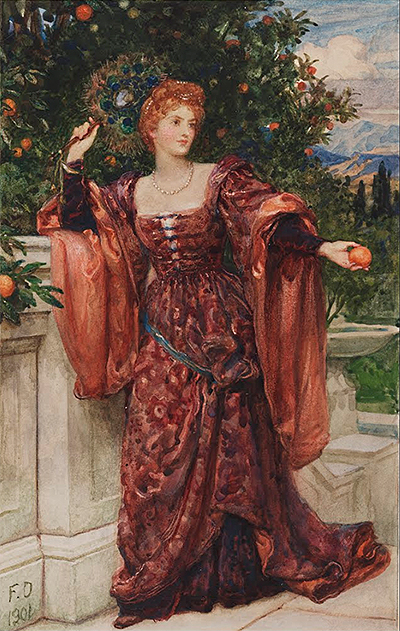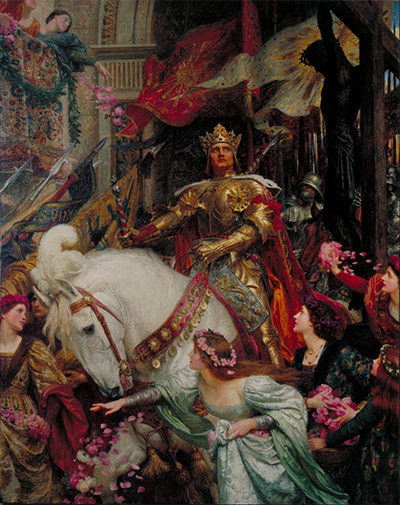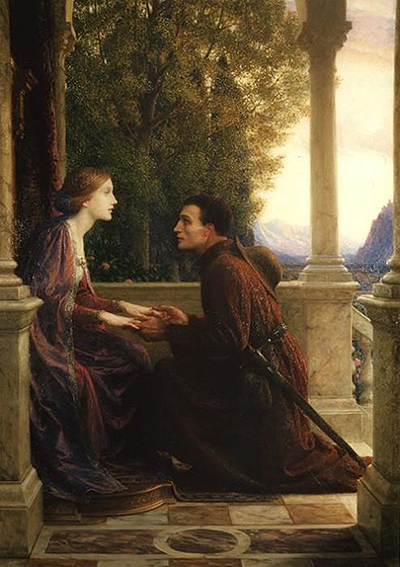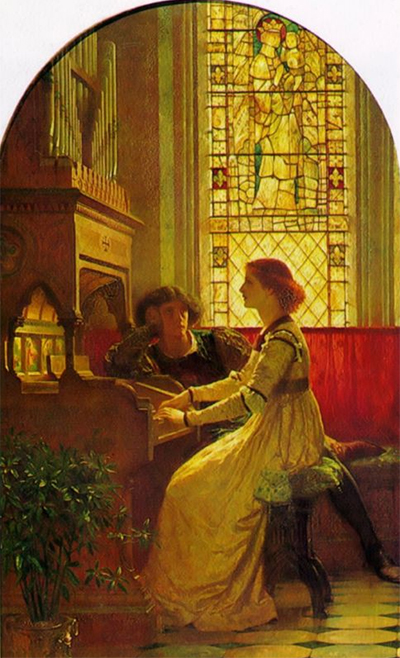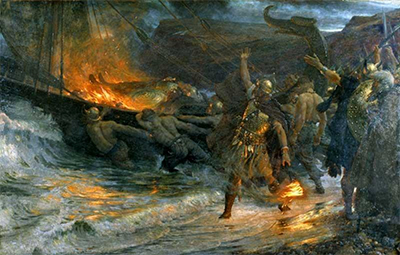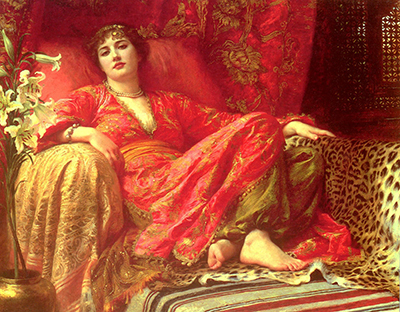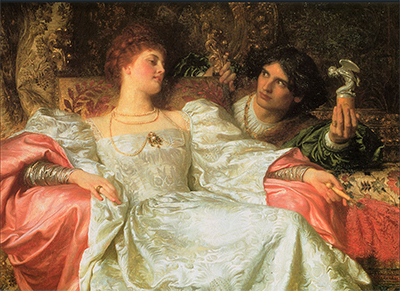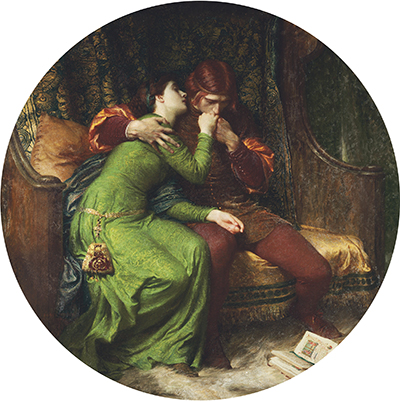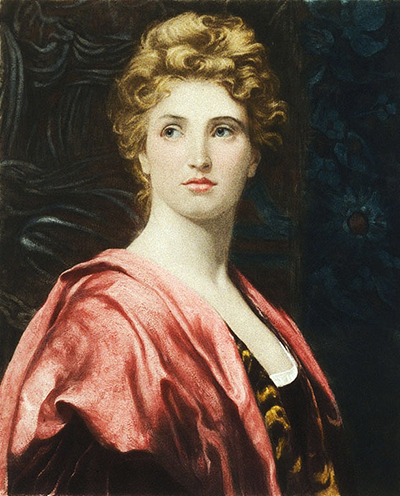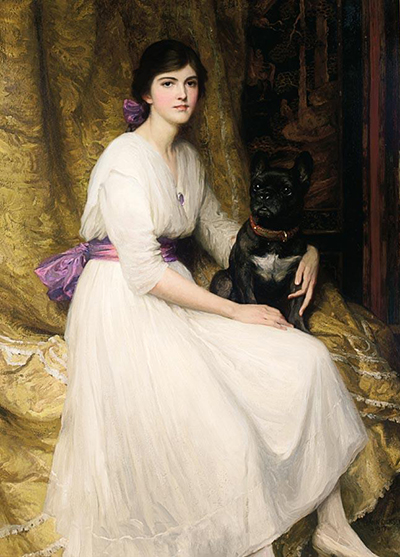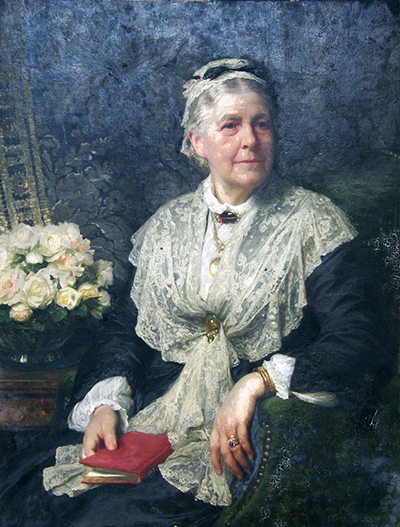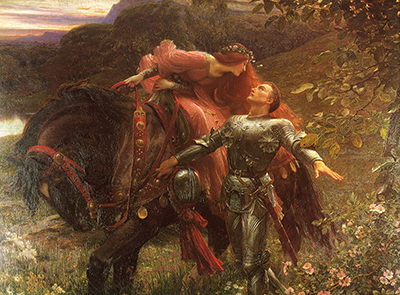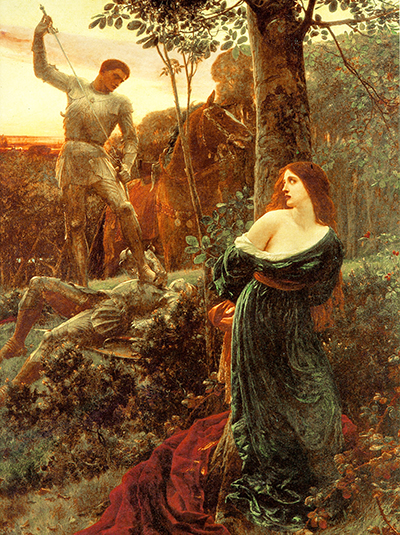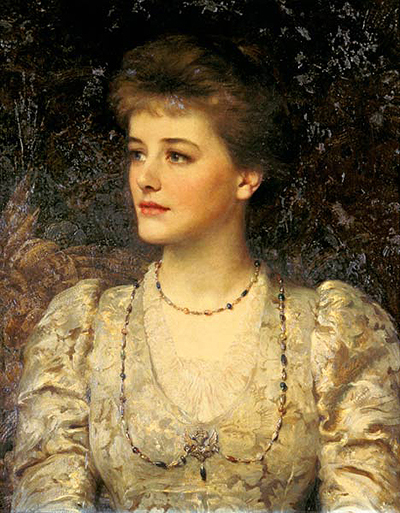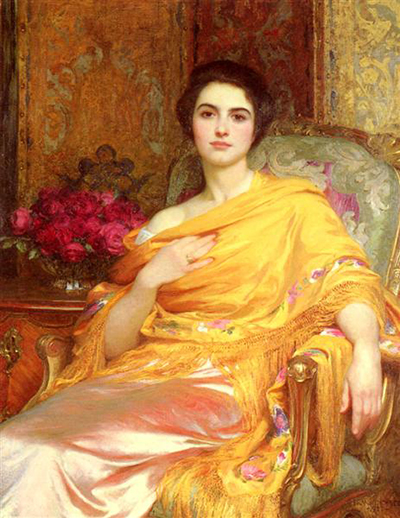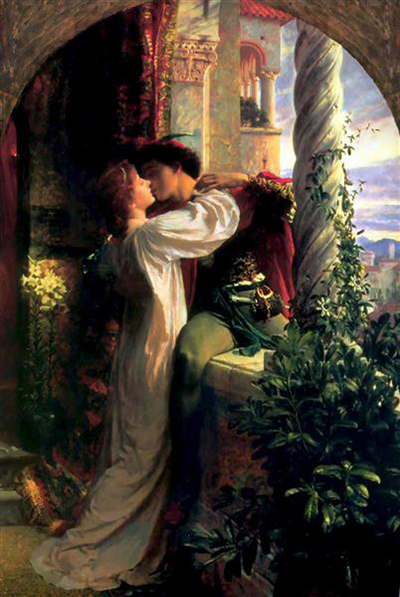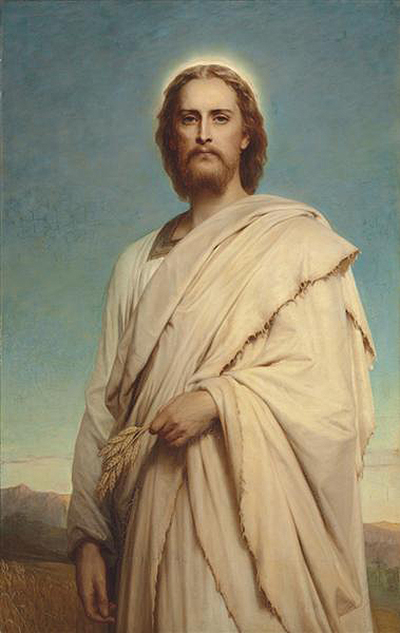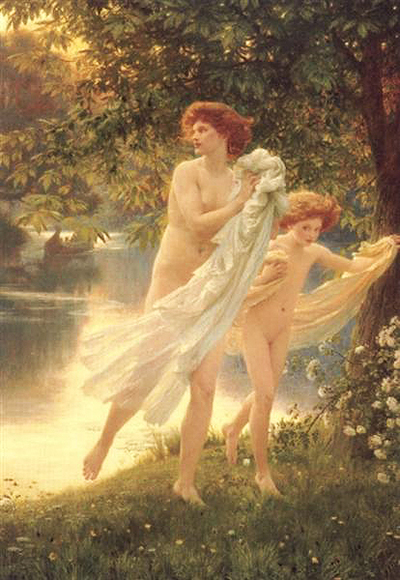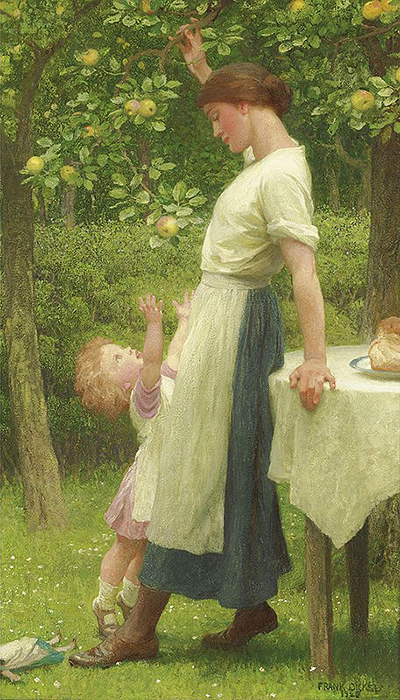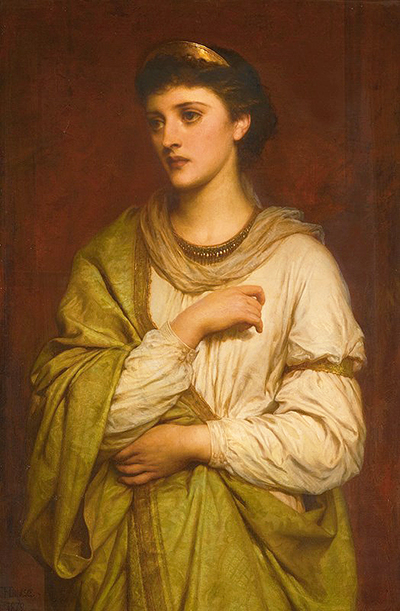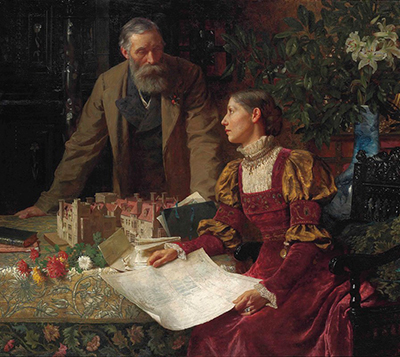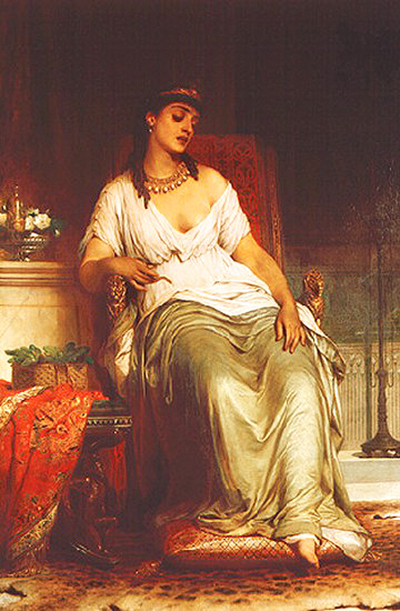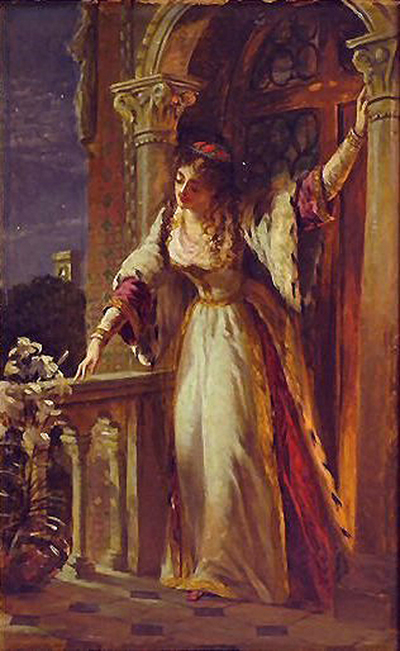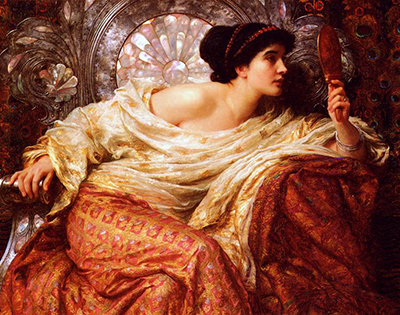Frank Dicksee paintings arrived just as his style of art was fading into obscurity but his career has much to enjoy, taking in an exciting blend of what had gone before, combined with his own meticulously honed artistic skills.
This was an artist who came from a family that was deeply involved in the arts, and his father, Thomas Francis, would be one of the biggest influences on his own artistic direction. Frank himself would go onto become the most prominent name within his family, thanks to the fine pieces that are displayed in this page. Several recent publications have placed a stronger focus on his achievements and allowed us to understand the man himself far better. They have also put together a more comprehensive list of his paintings and drawings which are thinly spread across a number of private collections.
Although a Realist artist, Frank Dicksee was most influenced by the Pre-Raphaelite and Aesthetic art movements. You will see evidence of that in Dicksee's paintings from the content and themes that he covered. Sadly, his career plus other realist artists from around this period were ridiculed by academics in the years that have passed since but in recent times there has been a renewal of interest in their work. Speaking of specific influences on this artist, many have pinpointed the likes of Lord Leighton and John Everett Millais. The relevance of the Aesthetic art movements would suggest a connection to its two best known exponents, namely William Morris and Edward Burne-Jones.
The fundamental foundation in Dicksee's paintings were his skills as a draughtsman, a medium that he placed significant importance upon. The artist practised his portrait drawing intensively right through out his career and never attempted to move away from his disciplined approach which came from years of academic training. Whilst others were starting to bring about new forms of expression, this British painter and illustrator would stubbornly continue along his prefered path. The results were highly impressive, but somewhat forgotten during a time of artistic turmoil across Europe. That said, he received a number of impressive awards in the earlier part of his career in both France and England, but tastes changed later on and his work started to be regarded as old fashioned in his later years - he passionately defended traditional artistic values at all times, especially when speaking at the Royal Academy.
Artist Dicksee would spend his own career capturing images of emotion in his portraits, often with facial expressions and poses of dreams and hopes. These portraits would then be inserted into beautiful, near perfect environments to produce art which would be calming and enchanting. Technically impressive and with influences from literature, there is much to see and enjoy. British literature was going through a prolific period at this time and so it made sense for romantically-inclined artists to use it as inspiration for their own paintings and drawings. In the present day, where so much abstraction is on offer, many feel refreshed by more traditional, classical approaches such as this. Some more conservative voices would also point to it as being "proper" art, versus the variety of modern art movements that exist today. Of course, the goal posts are always moving with regards to what is accepted by academics, and even in his own career this would be the case. Today, thankfully, there is room for all different types of artists, and it is acceptable to see the positive qualities in a wide range of different approaches.



